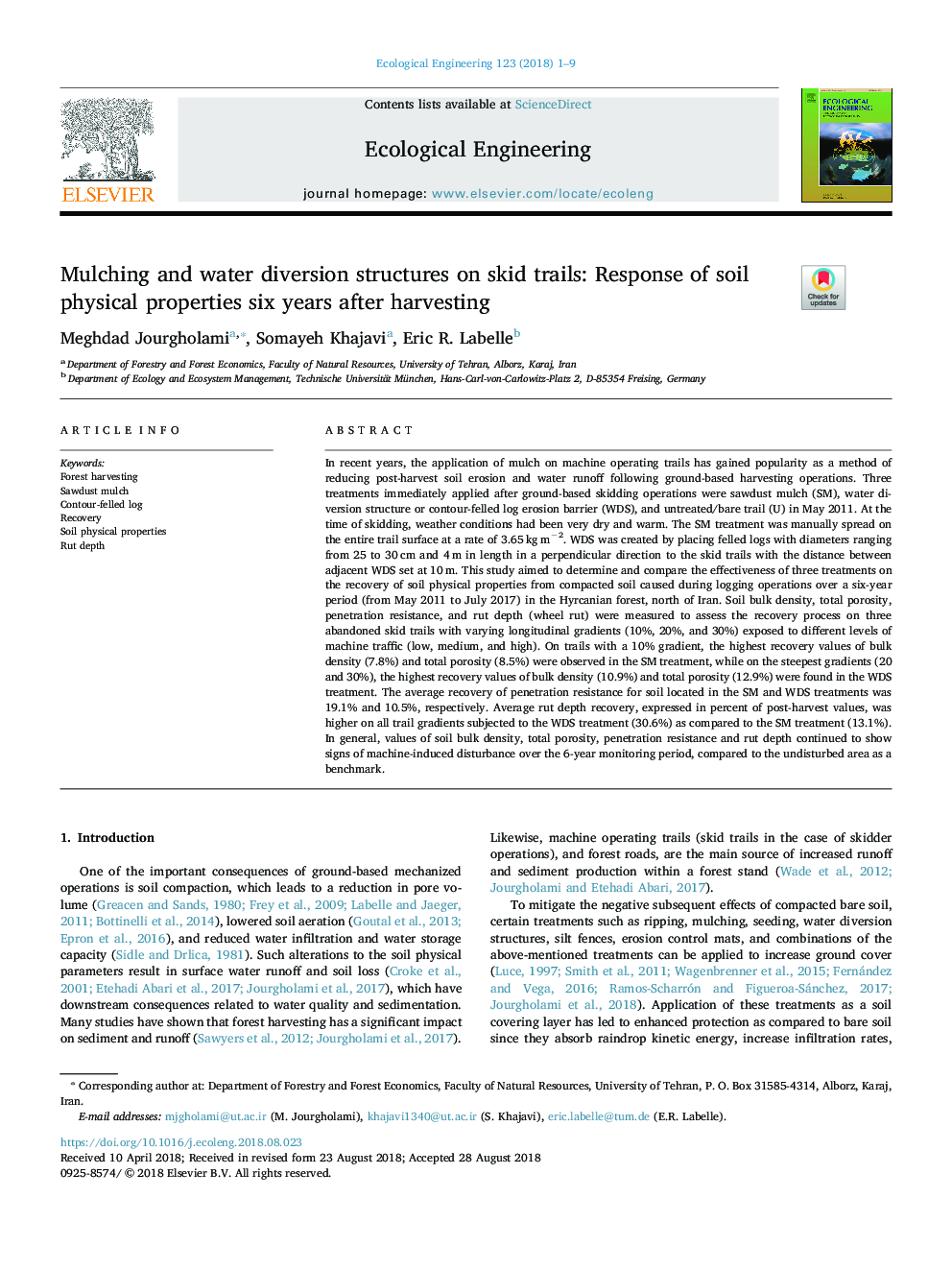| کد مقاله | کد نشریه | سال انتشار | مقاله انگلیسی | نسخه تمام متن |
|---|---|---|---|---|
| 10144333 | 1646300 | 2018 | 9 صفحه PDF | دانلود رایگان |
عنوان انگلیسی مقاله ISI
Mulching and water diversion structures on skid trails: Response of soil physical properties six years after harvesting
ترجمه فارسی عنوان
ساختارهای انحراف مولک و آب در مسیرهای پیاده روی: پاسخ خواص فیزیکی خاک شش سال پس از برداشت
دانلود مقاله + سفارش ترجمه
دانلود مقاله ISI انگلیسی
رایگان برای ایرانیان
کلمات کلیدی
برداشت جنگل، خاک اره مالچ، ورودی کانتور بهبود، خواص فیزیکی خاک، عمق چاله،
موضوعات مرتبط
علوم زیستی و بیوفناوری
علوم کشاورزی و بیولوژیک
بوم شناسی، تکامل، رفتار و سامانه شناسی
چکیده انگلیسی
In recent years, the application of mulch on machine operating trails has gained popularity as a method of reducing post-harvest soil erosion and water runoff following ground-based harvesting operations. Three treatments immediately applied after ground-based skidding operations were sawdust mulch (SM), water diversion structure or contour-felled log erosion barrier (WDS), and untreated/bare trail (U) in May 2011. At the time of skidding, weather conditions had been very dry and warm. The SM treatment was manually spread on the entire trail surface at a rate of 3.65â¯kgâ¯mâ2. WDS was created by placing felled logs with diameters ranging from 25 to 30â¯cm and 4â¯m in length in a perpendicular direction to the skid trails with the distance between adjacent WDS set at 10â¯m. This study aimed to determine and compare the effectiveness of three treatments on the recovery of soil physical properties from compacted soil caused during logging operations over a six-year period (from May 2011 to July 2017) in the Hyrcanian forest, north of Iran. Soil bulk density, total porosity, penetration resistance, and rut depth (wheel rut) were measured to assess the recovery process on three abandoned skid trails with varying longitudinal gradients (10%, 20%, and 30%) exposed to different levels of machine traffic (low, medium, and high). On trails with a 10% gradient, the highest recovery values of bulk density (7.8%) and total porosity (8.5%) were observed in the SM treatment, while on the steepest gradients (20 and 30%), the highest recovery values of bulk density (10.9%) and total porosity (12.9%) were found in the WDS treatment. The average recovery of penetration resistance for soil located in the SM and WDS treatments was 19.1% and 10.5%, respectively. Average rut depth recovery, expressed in percent of post-harvest values, was higher on all trail gradients subjected to the WDS treatment (30.6%) as compared to the SM treatment (13.1%). In general, values of soil bulk density, total porosity, penetration resistance and rut depth continued to show signs of machine-induced disturbance over the 6-year monitoring period, compared to the undisturbed area as a benchmark.
ناشر
Database: Elsevier - ScienceDirect (ساینس دایرکت)
Journal: Ecological Engineering - Volume 123, November 2018, Pages 1-9
Journal: Ecological Engineering - Volume 123, November 2018, Pages 1-9
نویسندگان
Meghdad Jourgholami, Somayeh Khajavi, Eric R. Labelle,
